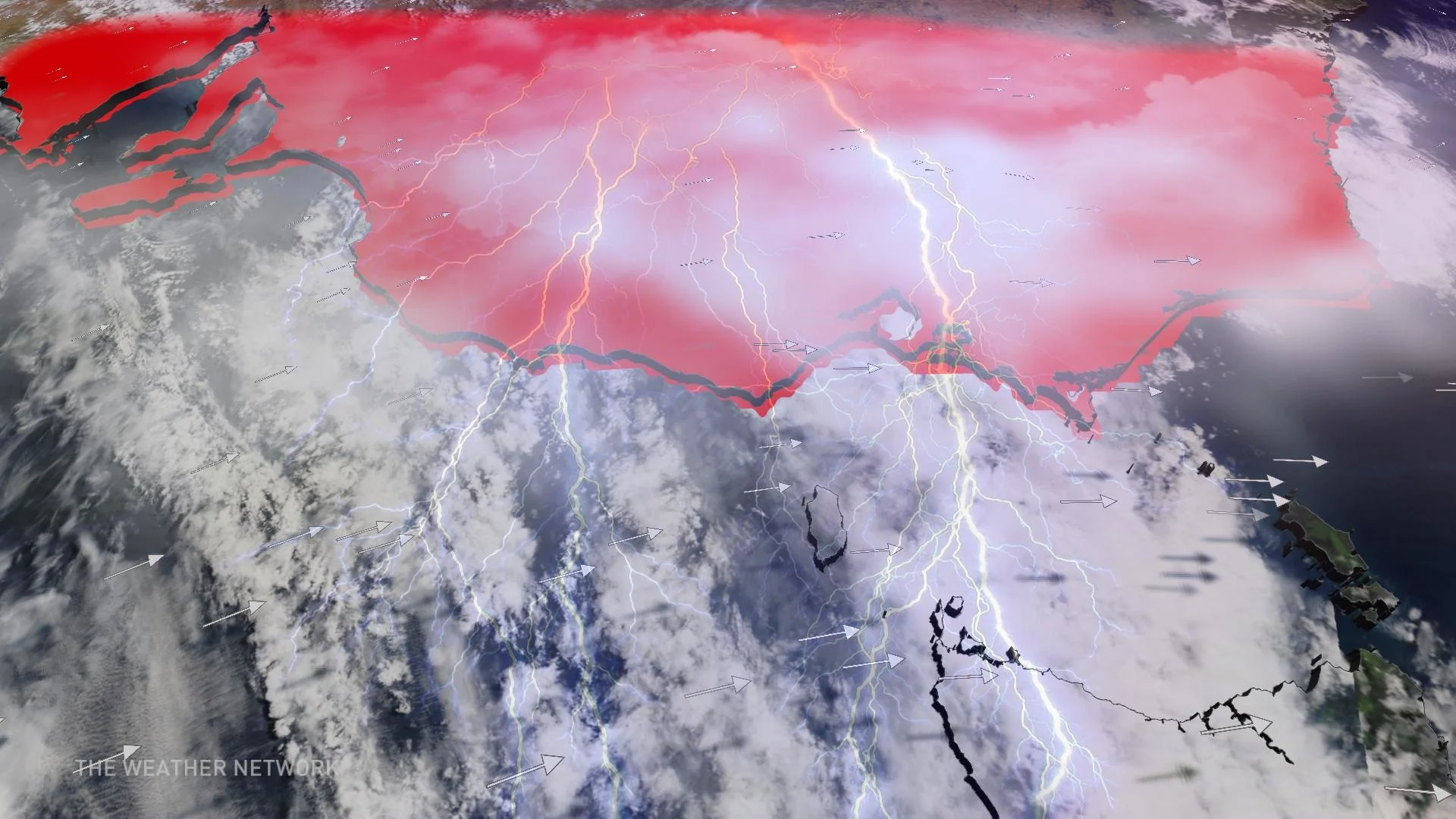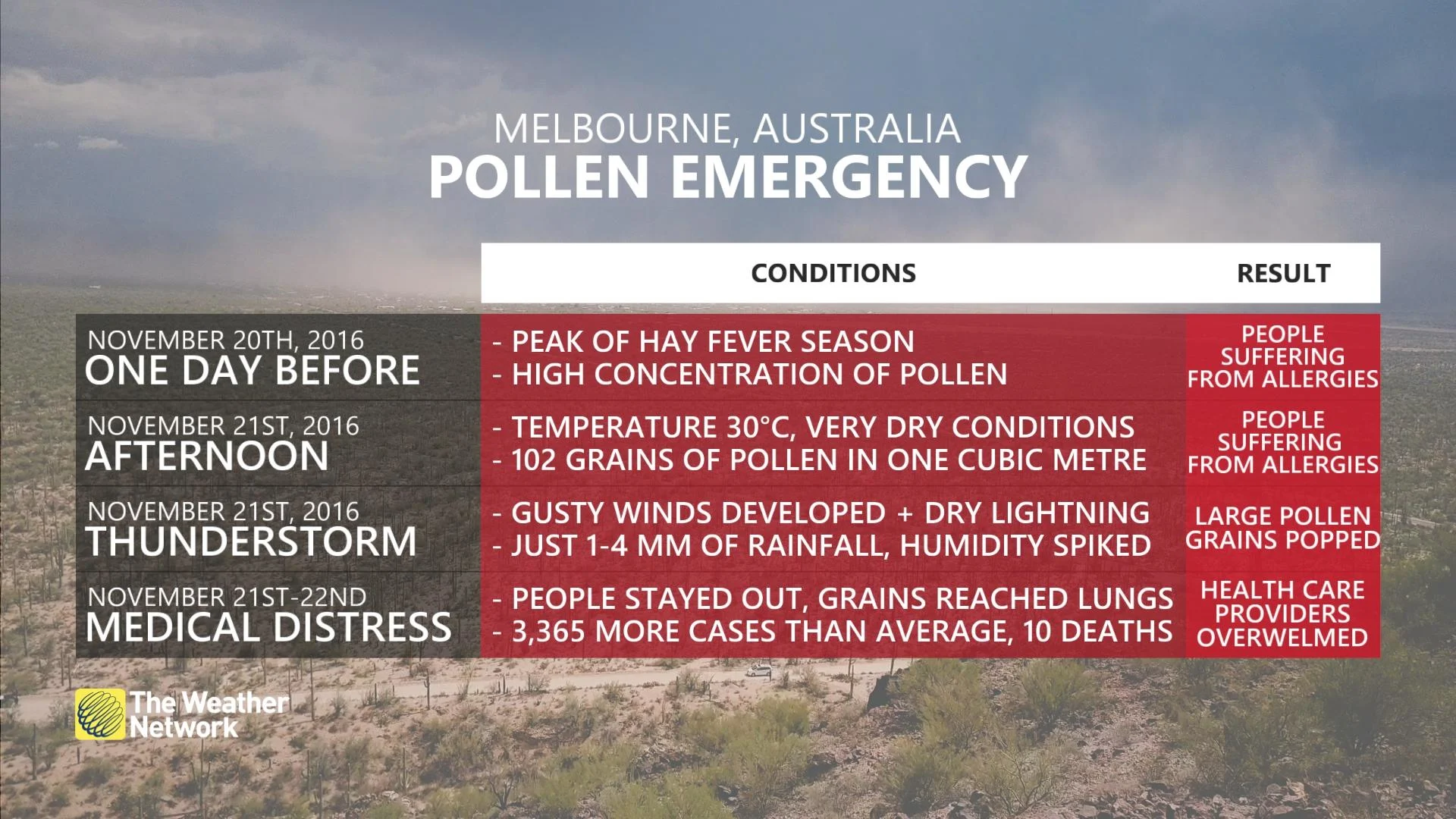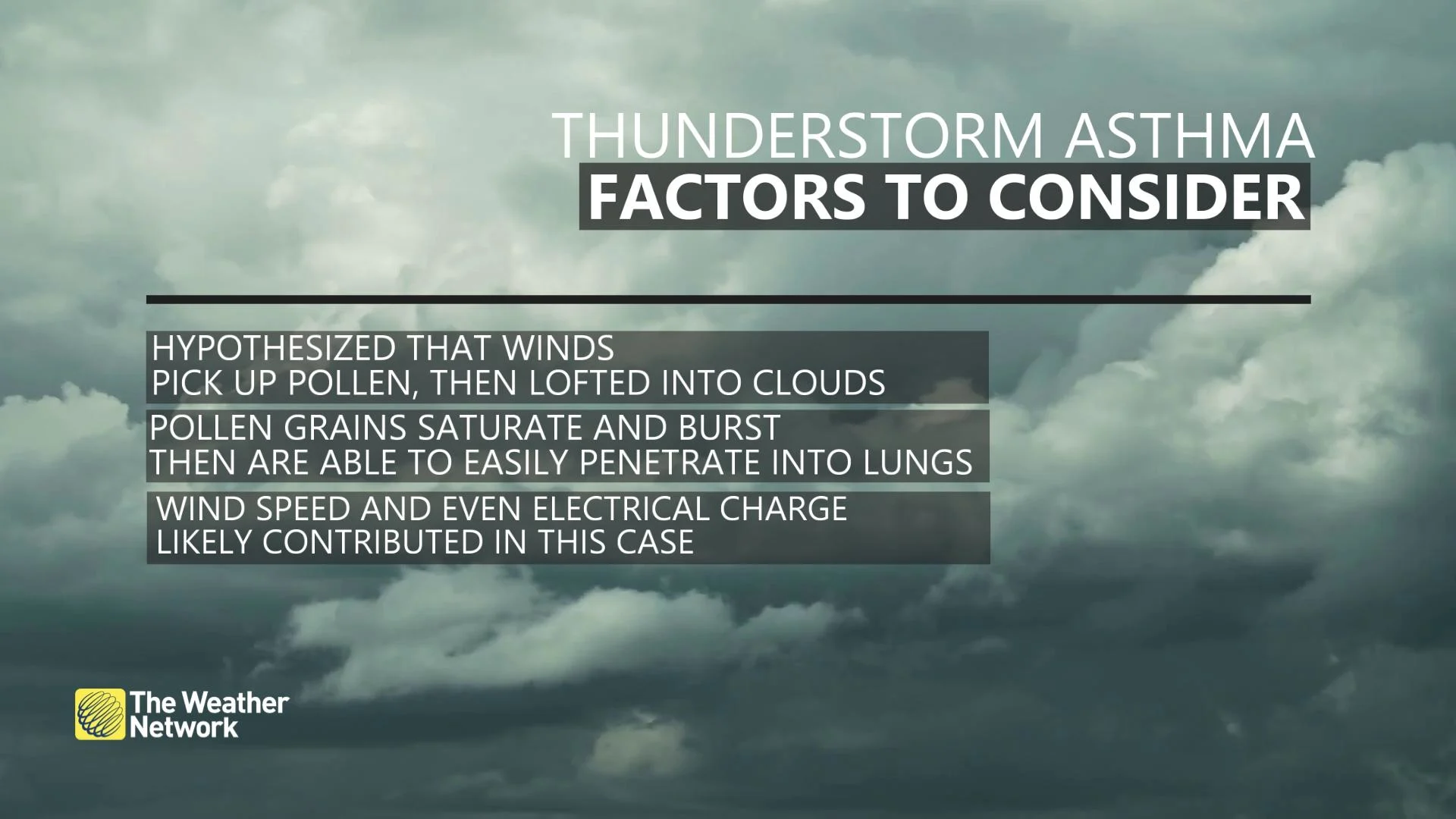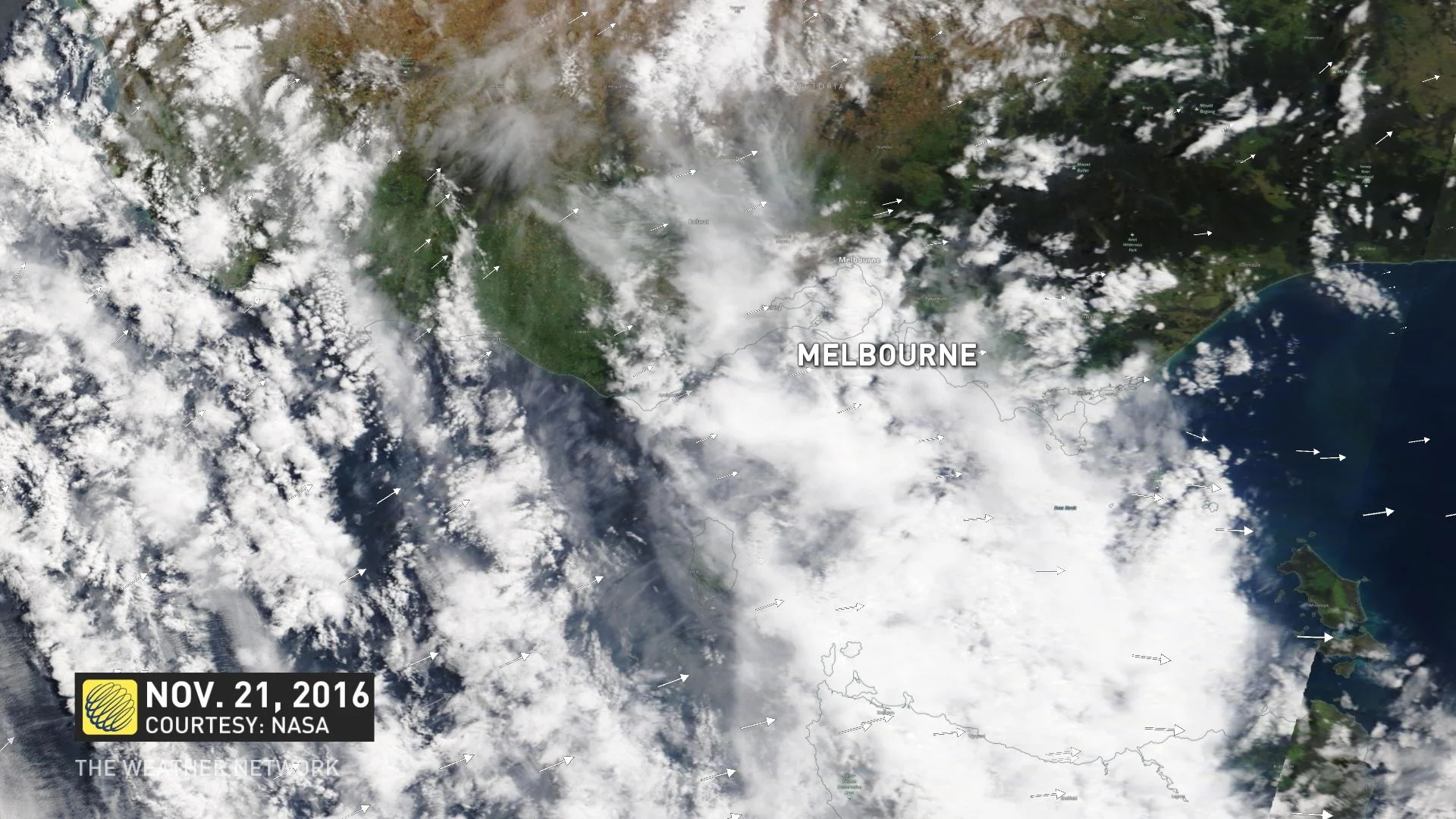
Unlocking the mysterious pollen-filled storm that sent thousands to the ER
The 2016 storm in Australia triggered a course of events that led to thousands of hospitalizations, and several deaths.
Canadians are well-versed with the threat of adverse thunderstorms and also a lengthy allergy season – but what about the thought of a thunderstorm triggering a dangerous allergic reaction?
If you're an allergy sufferer, you might have noticed that, as the weather conditions fluctuate, so do the severity of symptoms.
A recent scientific model published helps uncover the mechanism that thunderstorms can significantly enhance the threat for 'thunderstorm’ asthma.
It's well-documented that the world's most impactful thunderstorm asthma event happened on November 21st, 2016, in Melbourne, Australia.
During the days leading up to the thunderstorm event, the local pollen count was near the seasonal peak – and dry atmospheric conditions blossomed under temperatures over 30°C.

The spike in emergency visits for asthma symptoms after the thunderstorm put a significant strain on the health care system; consequently, 3,000 excess cases and ten fatalities occurred.
The results were tragic. Ten people passed away. The severity of these asthma attacks is in part because of the size of the fragmented pollen grains.
Although allergies can be an unfortunate nuisance, targeting the nose and throat passageways, a process can break down the pollen grain into smaller pieces that can penetrate deeper into the sensitive airways of the lungs – and quickly become life-threatening.
These broken down fragments are referred to as sub-pollen particles, and this metamorphosis has been documented to occur with thunderstorm activity.
Humidity has shown to be a conduit to initiate the pollen breakdown, the study mentions other catalysts at play.

"The mechanisms studied involve mechanical friction from wind gusts, electrical build-up and discharge incurred during conditions of low relative humidity, and lightning strikes," the researchers say. "Our results suggest that these mechanisms likely operated in tandem with one another, but the lightning method was the only mechanism to generate a pattern in sub-pollen particles following the path of the storm."
Not only is the friction of the wind sometimes enough to rupture the pollen, but the electrical charge from lightning can also disrupt the pollen grain.
The whole pollen grain lofted into the clouds is fragmented into sub-pollen particles and exits the thunderstorm through a downdraft or an outflow.

The photo above, taken from space during the infamous event highlights the conditions, and the northwest winds from the agricultural fields around the area contributed to the influx of pollen. The outflows travelled east and enveloped metropolitan areas, quickly resulting in an influx of patients to the emergency departments.
The computer models created to warn about future thunderstorm asthma attacks have a high propensity to give ample false alarms, particularly just looking at atmospheric moisture. A thunderstorm might not even be a prerequisite, as stated in the journal: "Some new promising research suggests that a thunderstorm itself does not need to be present to cause epidemic asthma, the only evidence of the strong atmospheric convergence."






